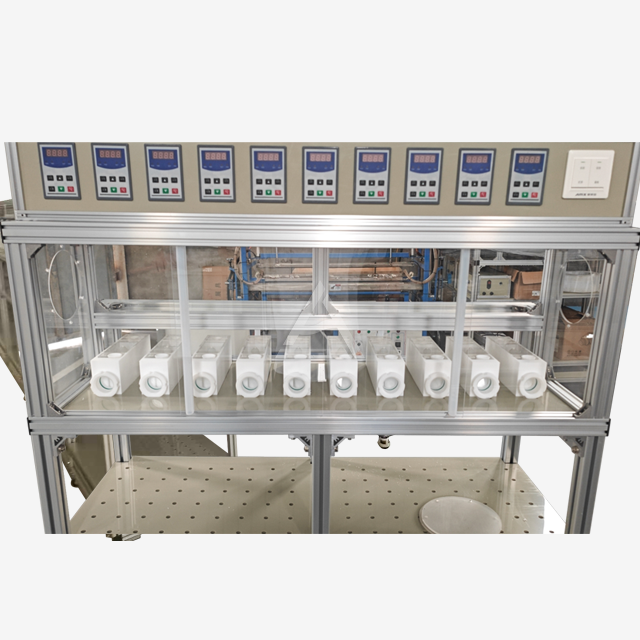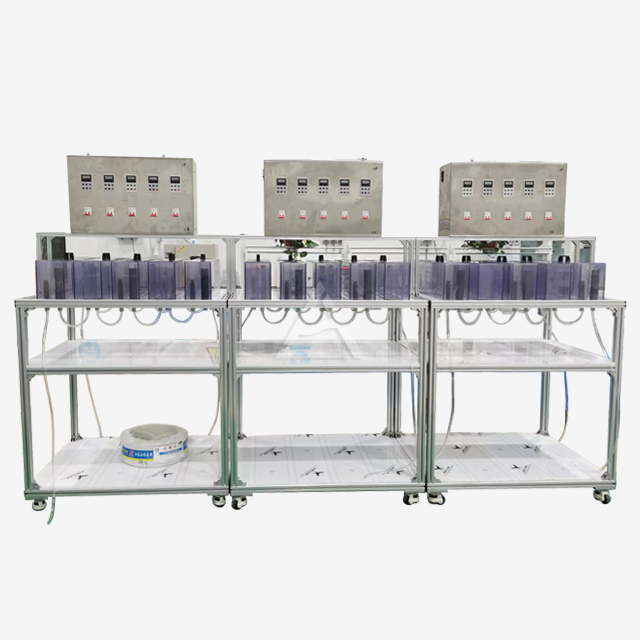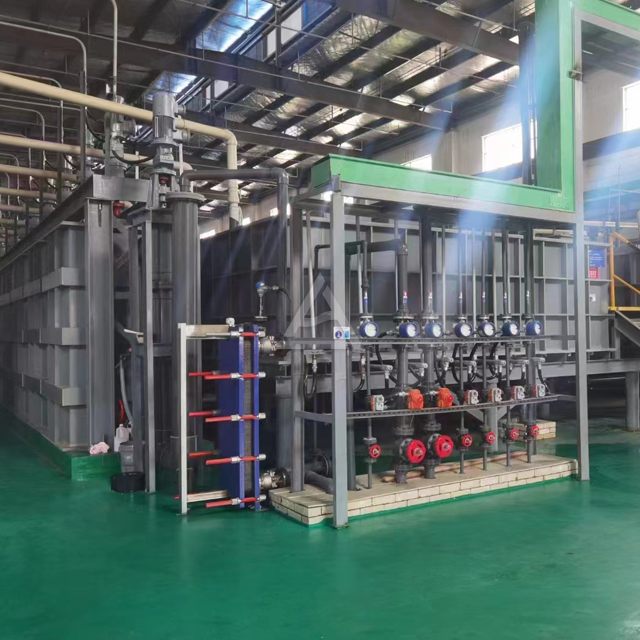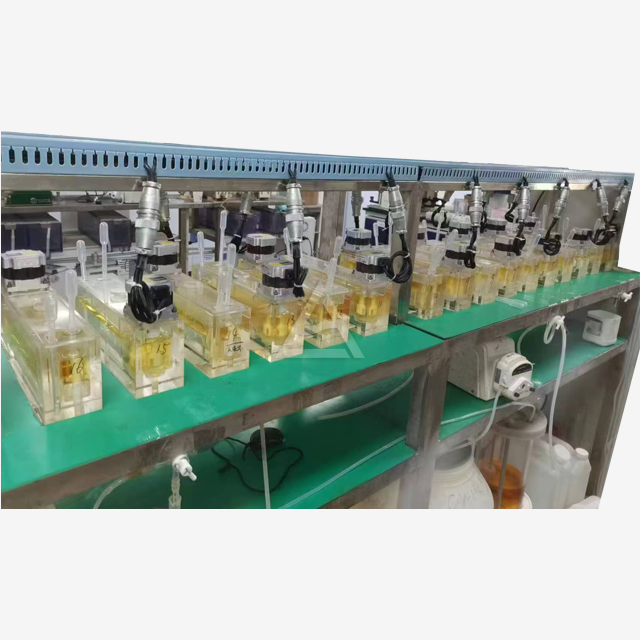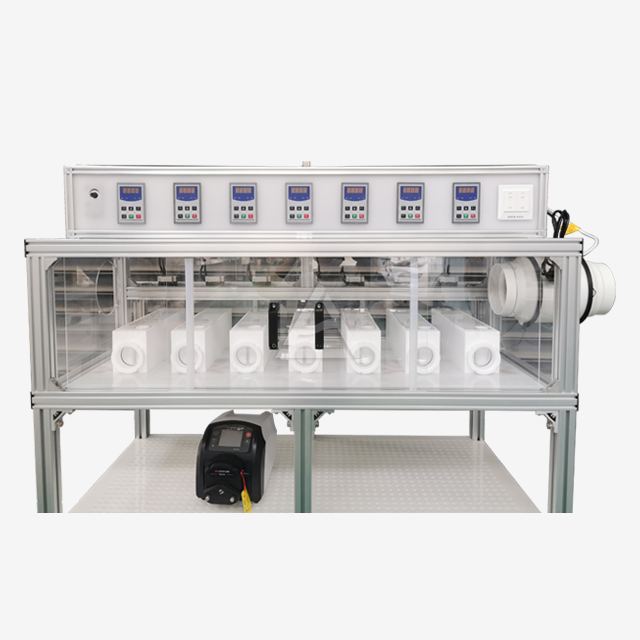Key Considerations in Custom Mixer Settler Design for Nuclear Applications
Material Selection for Radiation Resistance and Chemical Compatibility
Choosing the right materials for a custom mixer settler in nuclear fuel separation is paramount. The harsh radioactive environment and corrosive chemicals involved demand materials with exceptional durability and resistance. High-performance polymers like PEEK (Polyether Ether Ketone) and PTFE (Polytetrafluoroethylene) offer excellent chemical resistance and stability under radiation exposure. For metal components, titanium and specific grades of stainless steel (such as 316L) are preferred due to their corrosion resistance and mechanical strength.
The selection process must consider factors such as radiation-induced degradation, chemical compatibility with process fluids, and long-term structural integrity. For instance, transparent PVC or PMMA may be used for watch windows, allowing visual inspection of the separation process while maintaining containment. The plate thickness, typically ranging from 5mm to 10mm, should be carefully calculated to withstand operational pressures and provide adequate shielding where necessary.
Optimizing Mixing and Settling Chamber Designs
The heart of a custom mixer settler lies in its mixing and settling chambers. For nuclear applications, these must be designed to maximize extraction efficiency while minimizing the risk of criticality. The mixing chamber should provide thorough blending of the aqueous and organic phases, often achieved through carefully designed impellers or static mixers. The settling chamber's dimensions and internal baffles must be optimized to ensure complete phase separation within the residence time constraints.
Engineers often employ computational fluid dynamics (CFD) simulations to refine chamber designs, analyzing flow patterns and identifying potential dead zones or areas of insufficient mixing. The ability to adjust the mixer-settler stage amount allows for process optimization, tailoring the number of extraction stages to the specific nuclear fuel separation requirements. Additionally, incorporating features like adjustable phase interface height controls can significantly enhance separation performance and operational flexibility.
Implementing Safety Features and Containment Systems
Safety is paramount in nuclear fuel processing, and custom mixer settlers must incorporate multiple layers of protection. Anti-overflow tank devices are essential to prevent spills and contain potential leaks. These systems should be designed with redundancy in mind, ensuring that even in the event of primary containment failure, hazardous materials remain safely confined.
Integrating temperature control devices is crucial for maintaining optimal process conditions and preventing uncontrolled reactions. Water-bath jacket devices can provide precise temperature regulation, while also serving as an additional containment layer. pH adjustment systems may be incorporated to fine-tune the chemical environment within the mixer settler, optimizing extraction efficiency and preventing undesired side reactions.
Advanced monitoring and control systems, including real-time radiation detection and remote operation capabilities, should be seamlessly integrated into the custom mixer settler design. These features not only enhance safety but also improve overall process control and efficiency in nuclear fuel separation operations.

Enhancing Extraction Efficiency in Nuclear Fuel Separation
Innovative Agitation Technologies for Improved Mass Transfer
Advancing extraction efficiency in nuclear fuel separation processes demands cutting-edge agitation technologies. Custom mixer settlers can incorporate novel impeller designs or pulsed column mechanisms to enhance mass transfer between phases. These innovations promote intimate contact between the aqueous and organic phases, accelerating the extraction of target radionuclides.
Adjustable agitator speeds offer the flexibility to optimize mixing intensity based on specific separation requirements. This feature allows operators to fine-tune the balance between thorough mixing and minimizing emulsion formation, which can hinder phase separation. Some advanced designs may even incorporate ultrasonic agitation systems, leveraging acoustic energy to further enhance mass transfer rates without increasing mechanical stress on the equipment.
Optimizing Phase Ratios and Flow Dynamics
The efficiency of nuclear fuel separation in a custom mixer settler heavily depends on maintaining optimal phase ratios and flow dynamics. Engineers can design systems with adjustable weirs or interface control mechanisms to precisely manage the aqueous-to-organic phase ratio. This level of control enables operators to adapt to variations in feed composition or extraction targets without compromising separation performance.
Sophisticated flow distributors and baffles within the settling chamber can significantly improve phase disengagement. By carefully designing these internal components, engineers can minimize turbulence and promote laminar flow patterns, facilitating cleaner phase separation. The ability to adjust flow rates and residence times in different stages of the mixer settler allows for process optimization, balancing extraction efficiency with throughput requirements.
Integrating Process Monitoring and Control Systems
To maximize extraction efficiency, custom mixer settlers for nuclear fuel separation should incorporate advanced process monitoring and control systems. Real-time sensors for measuring phase interface levels, flow rates, and key chemical parameters (such as acidity or metal ion concentrations) provide valuable data for process optimization. Integration of these sensors with a centralized control system allows for automated adjustments to maintain peak performance.
Machine learning algorithms can be employed to analyze operational data and suggest optimal parameter settings, continually improving extraction efficiency over time. Additionally, the implementation of predictive maintenance systems can help prevent unexpected downtimes, ensuring consistent and efficient operation of the mixer settler in the demanding environment of nuclear fuel processing.

Ensuring Long-Term Reliability and Maintenance in Nuclear Environments
Designing for Easy Decontamination and Component Replacement
Long-term reliability in nuclear environments necessitates a design that facilitates easy decontamination and component replacement. Custom mixer settlers should feature smooth, crevice-free surfaces to prevent the accumulation of radioactive materials and simplify cleaning procedures. Modular construction allows for the quick isolation and replacement of contaminated or worn components, minimizing radiation exposure to maintenance personnel.
Innovative surface treatments or coatings can be applied to internal surfaces to enhance resistance to contamination and ease decontamination efforts. For instance, electropolished stainless steel or specialized polymer coatings can significantly reduce particle adhesion. Designing easily accessible inspection ports and incorporating remote handling capabilities for high-radiation areas can greatly improve maintainability while ensuring worker safety.
Implementing Predictive Maintenance Strategies
To ensure long-term reliability, custom mixer settlers in nuclear applications should incorporate predictive maintenance strategies. Advanced sensor systems can continuously monitor critical parameters such as vibration, temperature, and pressure, providing early warning of potential equipment failures. By analyzing this data using sophisticated algorithms, operators can schedule maintenance activities proactively, preventing unplanned shutdowns and extending equipment lifespan.
Digital twin technology can be leveraged to create virtual models of the mixer settler, allowing for simulations of various operational scenarios and predicting long-term wear patterns. This approach enables engineers to optimize maintenance schedules and identify potential design improvements for future iterations of the equipment, ensuring continued reliability in the challenging nuclear environment.
Enhancing Radiation Resistance Through Material Innovation
Ongoing research in materials science plays a crucial role in improving the long-term reliability of custom mixer settlers in nuclear fuel separation. Novel composite materials, such as radiation-resistant polymer blends or advanced ceramic coatings, can significantly extend the operational lifespan of critical components. These innovations focus on maintaining structural integrity and chemical resistance even under prolonged exposure to high radiation levels and aggressive process chemicals.
Incorporating self-healing materials or applying in-situ repair technologies can further enhance the durability of mixer settler components. For example, self-healing polymers that can automatically repair minor cracks or damage caused by radiation exposure are being developed. Additionally, advanced welding and bonding techniques specific to radiation-resistant materials ensure the long-term integrity of fabricated structures, minimizing the risk of leaks or structural failures in these critical nuclear processing systems.

Conclusion
Designing a custom mixer settler for nuclear fuel separation processes requires a multifaceted approach that balances efficiency, safety, and long-term reliability. By carefully considering material selection, optimizing chamber designs, and implementing advanced safety features, engineers can create systems that meet the exacting demands of nuclear applications. Continuous innovation in agitation technologies, flow dynamics, and process control systems drives improvements in extraction efficiency. Furthermore, focusing on maintainability, predictive strategies, and material advancements ensures these critical systems remain reliable over extended operational periods in challenging radioactive environments.
Contact Us
Ready to optimize your nuclear fuel separation processes? Contact Cuiyan Technology for custom mixer settler solutions tailored to your specific needs. Our expert team combines cutting-edge technology with decades of industry experience to deliver high-performance, reliable extraction equipment. Reach out to us at wangzhijun@cuiyan-tec.com to discuss how we can enhance your nuclear fuel processing capabilities.




